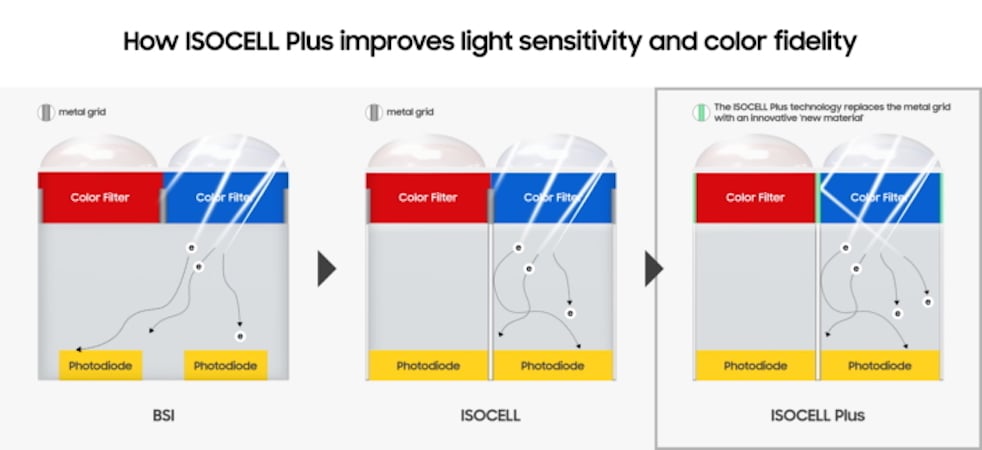Samsung, the South Korean electronics company today introduced its new ‘ISOCELL Plus’ technology, which allows CMOS image sensors to capture more light, thus significantly increasing light sensitivity and colour fidelity. Thanks to this new technology, smartphone consumers can now expect even more accurate and clearer photos in challenging light environments. To take high-quality images, CMOS image sensors need to hold as much light, or photons, as possible and transmit the right colour information to the photodiode. Samsung solved these issues back in 2013 with the introduction of ISOCELL technology. ISOCELL forms a physical barrier between the neighbouring pixels, reducing colour crosstalk and expanding the full-well capacity. This enables each pixel to absorb and hold more light than the conventional backside-illuminated (BSI) image sensor design for superior image quality.

For the ISOCELL Plus, Samsung has come up with a new optimised pixel architecture. In the existing pixel structure, metal grids are formed over the photodiodes to reduce the interference between the pixels, which can also lead to some optical loss as metals tend to reflect and/or absorb the incoming light. For ISOCELL Plus, Samsung replaced the metal barrier with a new material developed by Fujifilm, minimising optical loss and light reflection.
“We value our strategic relationship with Samsung and would like to congratulate on the completion of the ISOCELL Plus development. This development is a remarkable milestone for us as it marks the first commercialisation of our new material. Through continuous cooperation with Samsung, we anticipate to bring more meaningful innovation to mobile cameras,” said Naoto Yanagihara, corporate vice president of Fujifilm.
Samsung says the new ISOCELL Plus delivers higher colour fidelity along with up to a 15% enhancement in light sensitivity. The technology also enables image sensors to equip 0.8-micrometer (µm) and smaller-sized pixels without any loss in performance, making it an optimal solution for developing super-resolution cameras with over 20MP.
“Through close collaboration with Fujifilm, an industry leader in imaging and information technology, we have pushed the boundaries of CMOS image sensor technology even further. The ISOCELL Plus will not only enable the development of ultra-high-resolution sensors with incredibly small pixel dimensions but also bring performance advancements for sensors with larger pixel designs,” said Ben K. Hur, vice president of System LSI marketing at Samsung Electronics.
Samsung will be showcasing the ISOCELL Plus technology at the ongoing Mobile World Congress Shanghai.















